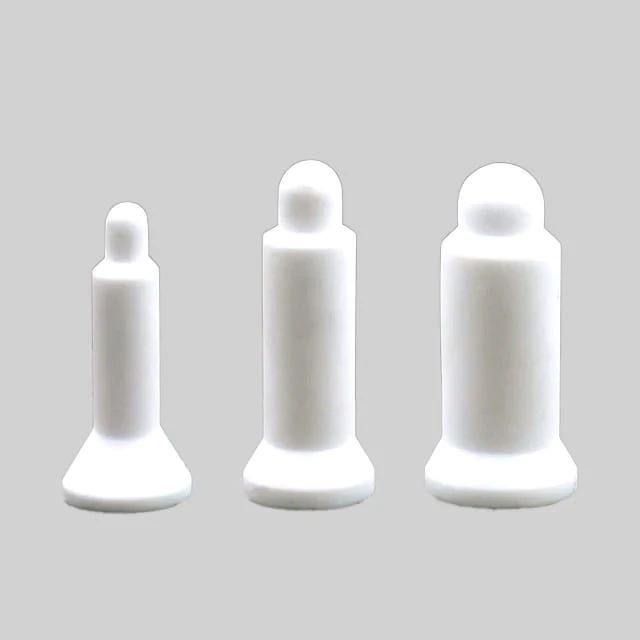
fine ceramics
Engineering Advanced Fine Alumina (Al₂O₃) Ceramic Positioning Pin Straight Bevel for Precision Applications
Item Number : KM-C012
Price varies based on specs and customizations
- Material
- Ceramic
- Specification
- See the form
Shipping:
Contact us to get shipping details Enjoy On-time Dispatch Guarantee.
Why Choose Us
Reliable PartnerEasy ordering process, quality products, and dedicated support for your business success.
Application
Technical ceramics are used in the manufacture of welding guide pins for projection and resistance welding in industry. Ceramic pins are electrically insulating and highly resistant to thermal shock. Ceramic pins have high hardness, high strength, wear resistance and high pressure resistance. In addition, they can be used up to 1200 degrees Celsius, so they last longer and are more economical.
- Nut welding and plastic mold parts: ceramic pins are widely used in nut welding and plastic mold parts requiring high hardness, wear resistance and insulation performance.
- Fixtures and stamping die components: Used for fixtures and stamping die components due to their strength, wear resistance and high temperature resistance.
- Solder Guide Pins: Ceramic pins, including alumina ceramics, are electrically insulating and thermal shock resistant for long-lasting and cost-effective use.
- Precision shafts, bearings and wear-resistant linings: Alumina ceramic pins are often used in precision shafts, roller and ball bearings and wear-resistant linings because of their high hardness, wear resistance, and low corrosion.
- Semiconductor parts, machine parts, and electrical insulators: Alumina ceramics are ideal for applications such as semiconductor parts, machine parts, and high-temperature electrical insulators due to their excellent electrical insulation, chemical resistance, and thermal conductivity.
- High pressure and mechanical seal: Ceramic pins can be used as high voltage insulators, suitable for mechanical seals.
Detail & Parts
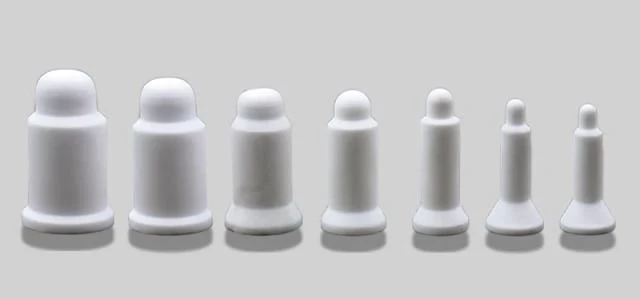
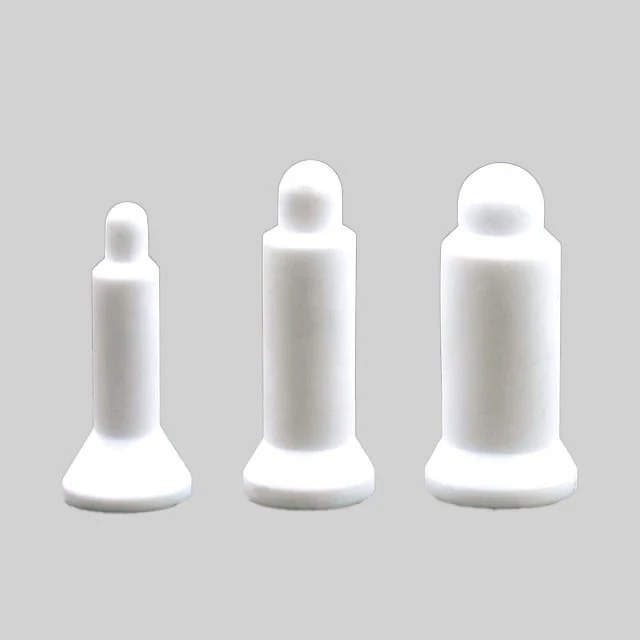

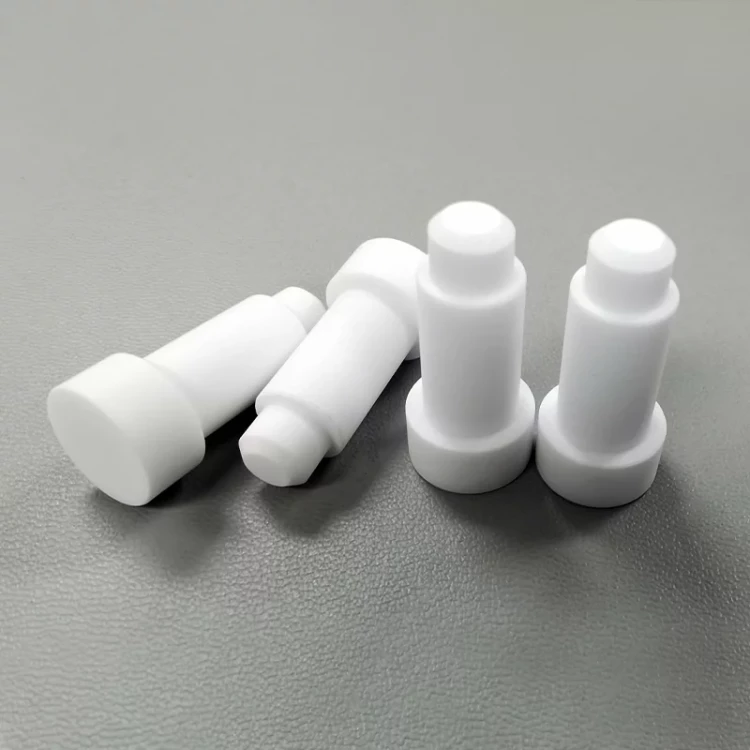
Technical specifications
| model | small head diameter | middle diameter | Bevel Diameter | length |
| M4 | 3.1mm | 4.8mm | 9.7mm | 22mm |
| M5 | 4mm | 5.5mm | 9.6mm | 22mm |
| M6 | 4.7mm | 6.7mm | 9.5mm | 26mm |
| M8 | 6.3mm | 8.5mm | 12mm | 26mm |
| M9 | 6.3mm | 9.7mm | 12.9mm | 28.9mm |
| M10 | 8.3mm | 10.7mm | 13.6mm | 24.5mm |
| M12 | 9.5mm | 12.7mm | 14.8mm | 26.5mm |
| M13 | 10mm | 13.7mm | 16.8mm | 32.9mm |
| model | small head diameter | middle diameter | Bevel Diameter | length |
| M4 | 3mm | 4.7mm | 7.7mm | 24.3mm |
| M5 | 4mm | 5.5mm | 9.6mm | 22mm |
| M6 | 4.8mm | 6.7mm | 9.9mm | 26mm |
| M8 | 6.2mm | 8.8mm | 11.9mm | 25.7mm |
| M10 | 8.3mm | 10.6mm | 14.2mm | 26.7mm |
| M12 | 9.1mm | 12.6mm | 14.7mm | 30.5mm |
| M14 | 12.5mm | 14.8mm | 15.7mm | 28.7mm |
The produce we show are available in different sizes and custom sizes are available on request.
Advantages
- Long lifespan: Ceramic pins have excellent wear resistance and can maintain their mechanical properties for a longer period of time, resulting in a longer lifespan.
- High Temperature Capability: These pins can withstand high temperatures and are suitable for high temperature applications.
- Cost-Effective: The durability and lifespan of ceramic pins helps save money by reducing the frequency of replacement.
- Electrically Insulating: Ceramic pins have excellent electrical insulating properties to prevent unwanted conduction in specific applications.
- Chemical Resistance: Alumina ceramics are especially corrosion resistant, making them suitable for applications requiring contact with corrosive substances.
- Wide range of applications: Ceramic pins are widely used in various industries such as automotive, manufacturing, semiconductor and electrical due to their multi-functional properties.
FAQ
What Are The Main Applications Of Fine Ceramics?
What Is CVD (Chemical Vapor Deposition) And What Are Its Key Advantages?
What Are The Main Types Of Fine Ceramics?
What Are Some Common Applications Of CVD Materials?
What Is The Principle Behind Fine Ceramics?
What Types Of CVD Materials Are Available?
What Are The Advantages Of Using Fine Ceramics?
How Does CVD Diamond Enhance The Performance Of Cutting Tools?
What Makes CVD Diamond Domes Suitable For High-performance Loudspeakers?
How Does CVD Diamond Improve Thermal Management In Electronic Devices?
4.9
out of
5
These positioning pins exceeded my expectations. They are incredibly durable and have significantly improved the efficiency of our production process.
4.7
out of
5
The pins' electrical insulating properties have been instrumental in preventing unwanted conduction, ensuring the safety and reliability of our operations.
4.8
out of
5
The high temperature capability of these pins has been a lifesaver in our high-heat applications. They have held up remarkably well and saved us from costly replacements.
4.6
out of
5
The chemical resistance of these pins has been a game-changer for us. They have proven to be impervious to the harsh chemicals we use, resulting in significant savings on maintenance and downtime.
4.9
out of
5
These pins have proven to be an excellent investment. Their durability and longevity have significantly reduced our maintenance costs and downtime.
4.7
out of
5
The precision and accuracy of these pins have been a revelation. They have enabled us to achieve a level of precision that we previously thought impossible.
4.8
out of
5
The versatility of these pins has been remarkable. They have seamlessly integrated into our existing systems and processes, delivering exceptional results.
4.6
out of
5
The customer service provided by KINTEK SOLUTION has been outstanding. They went above and beyond to ensure that we received our order quickly and efficiently.
4.9
out of
5
The fast delivery of these pins was a lifesaver. We were able to get our production line up and running again in record time.
4.7
out of
5
The value for money that these pins offer is unbeatable. They are incredibly durable and have saved us a significant amount of money in replacement costs.
4.8
out of
5
The technological advancement represented by these pins is truly impressive. They have enabled us to achieve new levels of efficiency and productivity.
REQUEST A QUOTE
Our professional team will reply to you within one business day. Please feel free to contact us!
Related Products

Precision Machined Zirconia Ceramic Ball for Engineering Advanced Fine Ceramics
zirconia ceramic ball have the characteristics of high strength, high hardness, PPM wear level, high fracture toughness, good wear resistance, and high specific gravity.

High Temperature Alumina (Al2O3) Furnace Tube for Engineering Advanced Fine Ceramics
High temperature alumina furnace tube combines the advantages of high hardness of alumina, good chemical inertness and steel, and has excellent wear resistance, thermal shock resistance and mechanical shock resistance.
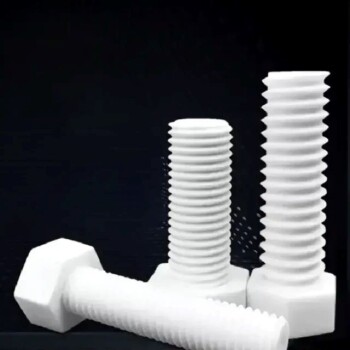
Alumina ceramic screws are fastening components made of 99.5% alumina, ideal for extreme applications requiring excellent thermal resistance, electrical insulation and chemical resistance.

Engineering Advanced Fine Alumina Al2O3 Ceramic Rod Insulated for Industrial Applications
Insulated alumina rod is a fine ceramic material. Alumina rods have excellent electrical insulating properties, high chemical resistance and low thermal expansion.
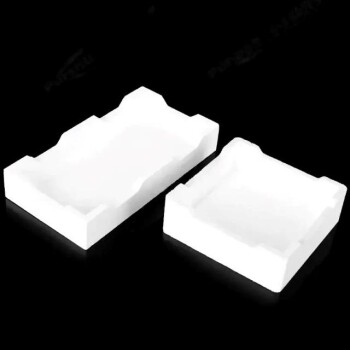
Advanced Engineering Fine Ceramics Alumina Ceramic Saggar for Fine Corundum
Alumina sagger products have the characteristics of high temperature resistance, good thermal shock stability, small expansion coefficient, anti-stripping, and good anti-powdering performance.

Alumina ceramics have good electrical conductivity, mechanical strength and high temperature resistance, while zirconia ceramics are known for their high strength and high toughness and are widely used.

Engineering Advanced Fine Ceramics Alumina Crucibles (Al2O3) for Thermal Analysis TGA DTA
TGA/DTA thermal analysis vessels are made of aluminum oxide (corundum or aluminum oxide). It can withstand high temperature and is suitable for analyzing materials that require high temperature testing.

Engineering Advanced Fine Alumina Al2O3 Ceramic Crucible for Laboratory Muffle Furnace
Alumina ceramic crucibles are used in some materials and metal melting tools, and flat-bottomed crucibles are suitable for melting and processing larger batches of materials with better stability and uniformity.

Engineering Advanced Fine Ceramics Alumina Al2O3 Crucible With Lid Cylindrical Laboratory Crucible
Cylindrical Crucibles Cylindrical crucibles are one of the most common crucible shapes, suitable for melting and processing a wide variety of materials, and are easy to handle and clean.

Precision Machined Yttrium Stabilized Zirconia Ceramic Rod for Engineering Advanced Fine Ceramics
Zirconia ceramic rods are prepared by isostatic pressing, and a uniform, dense and smooth ceramic layer and transition layer are formed at high temperature and high speed.
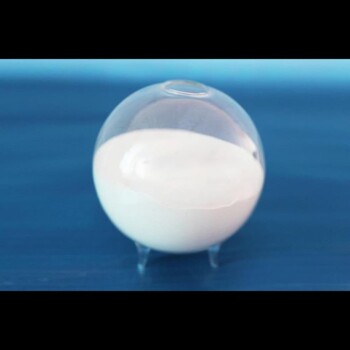
High Purity Alumina Granulated Powder for Engineering Advanced Fine Ceramics
Ordinary alumina granulated powder is alumina particles prepared by traditional processes, with a wide range of applications and good market adaptability. This material is known for its high purity, excellent thermal stability and chemical stability, and is suitable for a variety of high-temperature and conventional applications.

High Temperature Aluminum Oxide (Al2O3) Protective Tube for Engineering Advanced Fine Ceramics
Alumina oxide protective tube, also known as high temperature resistant corundum tube or thermocouple protection tube, is a ceramic tube mainly made of alumina (aluminum oxide).

Alumina wear-resistant ceramic washer are used for heat dissipation, which can replace aluminum heat sinks, with high temperature resistance and high thermal conductivity.

In the journey of scientific exploration and industrial production, every detail is crucial. Our arc-shaped alumina ceramic crucibles, with their excellent high temperature resistance and stable chemical properties, have become a powerful assistant in laboratories and industrial fields. They are made of high-purity alumina materials and manufactured through precision processes to ensure excellent performance in extreme environments.

Precision Machined Silicon Nitride (SiN) Ceramic Sheet for Engineering Advanced Fine Ceramics
Silicon nitride plate is a commonly used ceramic material in the metallurgical industry due to its uniform performance at high temperatures.

Silicon Carbide (SIC) Ceramic Sheet Wear-Resistant Engineering Advanced Fine Ceramics
Silicon carbide (sic) ceramic sheet is composed of high-purity silicon carbide and ultra-fine powder, which is formed by vibration molding and high-temperature sintering.

Silicon Carbide (SIC) Ceramic Plate for Engineering Advanced Fine Ceramics
Silicon nitride (sic) ceramic is an inorganic material ceramic that does not shrink during sintering. It is a high-strength, low-density, high-temperature-resistant covalent bond compound.

Engineering Advanced Fine Ceramics Aluminum Oxide Al2O3 Heat Sink for Insulation
The hole structure of the ceramic heat sink increases the heat dissipation area in contact with the air, which greatly enhances the heat dissipation effect, and the heat dissipation effect is better than that of super copper and aluminum.

Engineering Advanced Fine Ceramics Head Tweezers with Pointed Elbow Zirconia Ceramic Tip
Zirconia ceramic tweezers are a high-precision tool made of advanced ceramic materials, especially suitable for operating environments that require high precision and corrosion resistance. This type of tweezers not only has excellent physical properties, but is also popular in the medical and laboratory fields because of its biocompatibility.
Related Articles

Advanced Alumina Ceramics: Applications and Manufacturing Techniques
This article discusses the applications and manufacturing techniques of advanced alumina ceramics, including molds, isostatic pressing, and green bodies.

Advanced Alumina Ceramics: Applications and Manufacturing Techniques
Overview of alumina ceramics' applications and manufacturing methods, including molds, isostatic pressing, and green body formation.

Precision Ceramics in Semiconductor Applications
Exploring the use of precision ceramics in semiconductor equipment, their properties, and manufacturing processes.

Defects and Solutions for Isostatically Pressed Ceramic Balls
This article discusses various defects in isostatically pressed ceramic balls and provides solution strategies for each type of defect.

Structure and Properties of High-Temperature Engineering Ceramics
Explore the applications, structural features, and performance advantages of high-temperature engineering ceramics across various industries.

Research on Zirconia Ceramics in Dental Restoration
Explores the properties, preparation, and advantages of zirconia ceramics in dental restoration.

Precision Ceramic Materials for Energy Conversion Applications
Overview of various ceramic materials used in energy conversion technologies, including heaters, piezoelectric ceramics, and solid oxide fuel cells.

Advancements in Engineering Ceramic Materials
Explores new engineering ceramics with exceptional properties and applications in harsh environments, comparing them to traditional materials.

Mechanical Properties and Structural Enhancements of Ceramics
An in-depth analysis of the mechanical properties of ceramics, including strengths, weaknesses, and methods for improvement.

Understanding Hot Presses and Safety Considerations
An overview of hot presses, their applications, advantages, and safety precautions.

The Evolution and Strategic Importance of Advanced Ceramics
An in-depth analysis of the development, classification, and strategic importance of advanced ceramics in various industrial and technological fields.